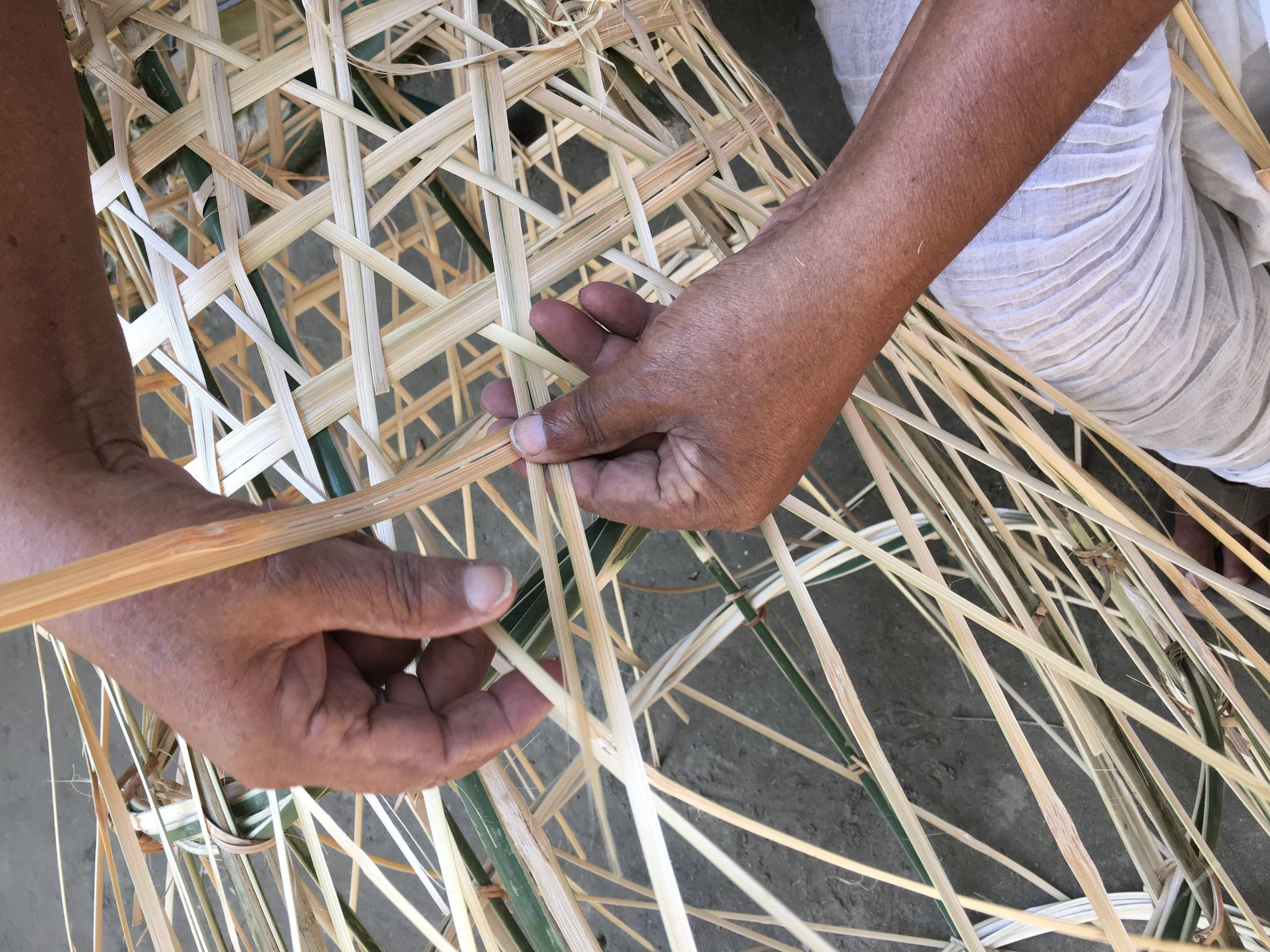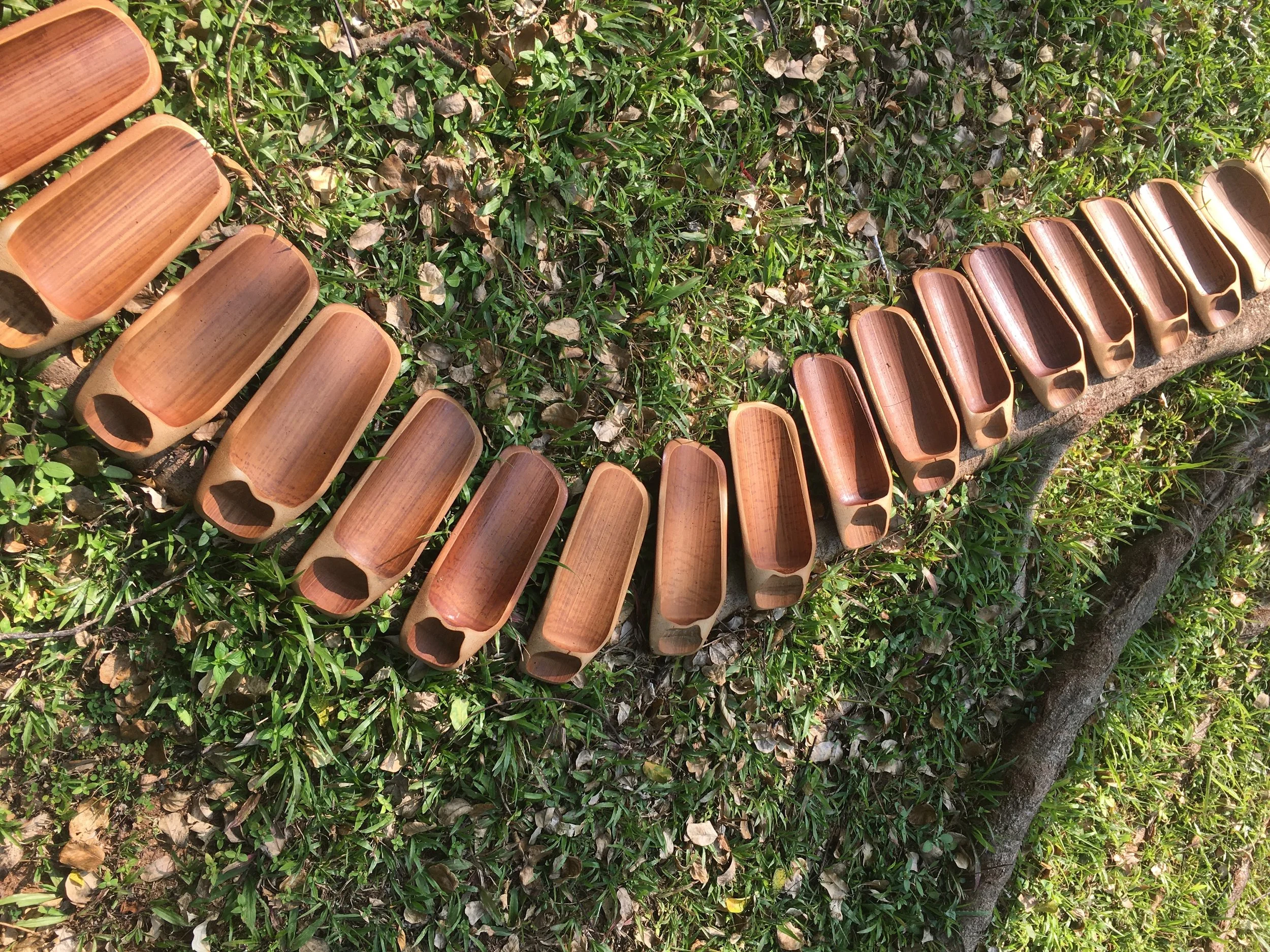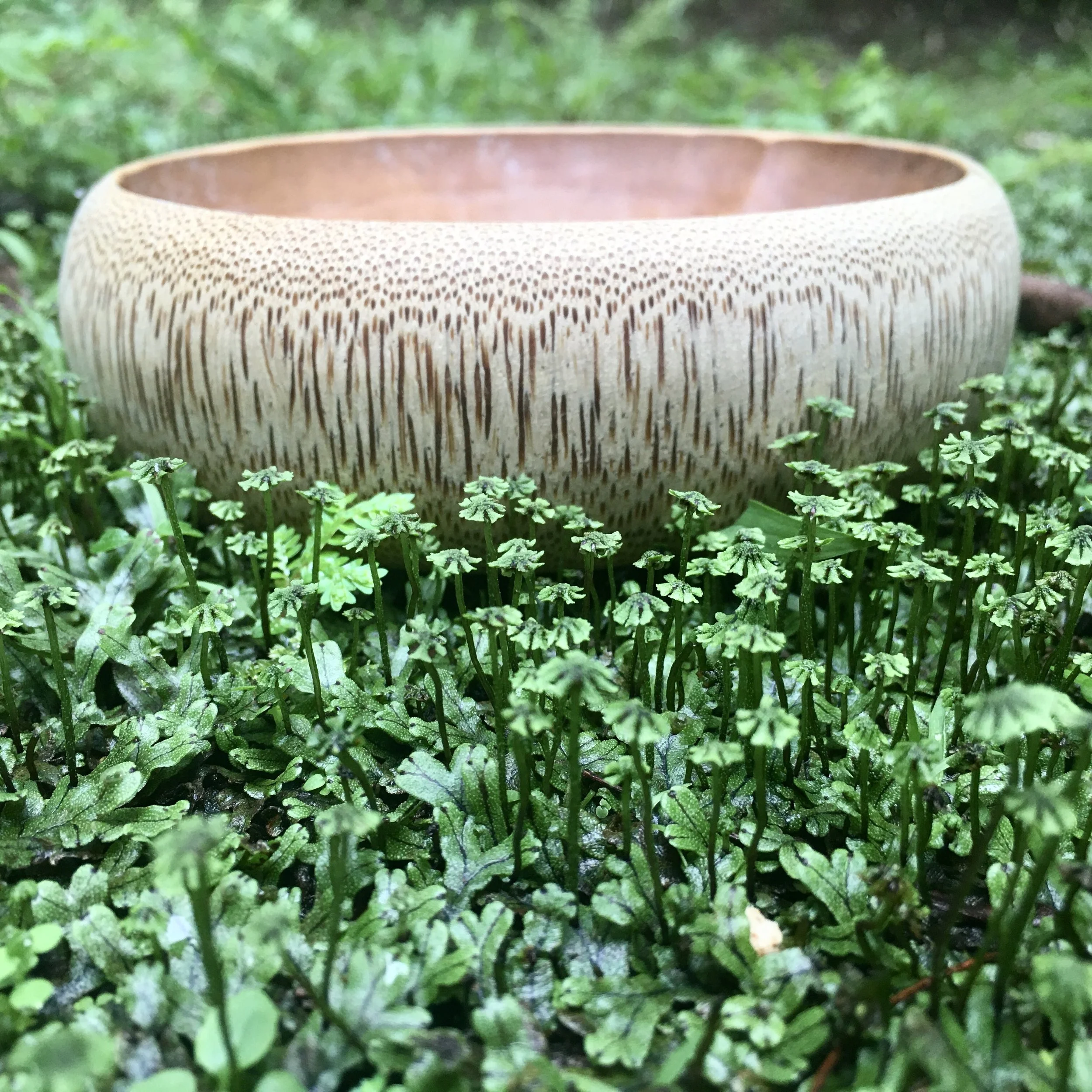A designer’s search for material and meaning
Materials shape how we bring ideas to life—infusing design with form, texture, and meaning. But beyond that, what makes a material truly feel right? That question stayed with me ten years ago, when I was searching for something that resonated on a deeper, more intuitive level.
At the time, I was living and working in Delhi as an industrial designer. I remember often wandering into building supply shops, drawn by the potential of raw materials for personal projects, a creative escape from the structure of my day job. I was constantly ideating, imagining things I could make and live with—objects that felt personal and cool.
As I moved from designing to actually making, I began to understand materials more deeply and became increasingly aware of the choices I was making. The turning point came when I paused to consider everything I might create over a lifetime, the materials I would choose, and the lasting imprint they might leave behind.
I experimented with metal, plastic, and engineered wood, yet none felt quite right. Over time, this dissonance grew into a quiet unease. I began to question—not just what I was making, but why. The reliance on machines and outsourced production only deepened my sense of disconnection from the process.That’s when I realised: what I was doing outside of work wasn’t so different from my job—except that outside, I had creative freedom. A freedom I wasn’t fully honouring. It became clear that I wasn’t just drawn to design; I needed to be part of the making, too. I wanted to feel closer to the material, and more intentional with every choice. That shift in perspective nudged me to pause, reflect, and begin to rethink my path.
This made me leave my industrial design job and take up freelance graphic work, a way to sustain myself while I explored what product design truly meant to me. Freelancing gave me the freedom to travel and step outside the confines of a conventional office space.
During this time, I began to explore crafts—a space where creation is deeply rooted in culture, community, and environmental values. Craft, I realised, could answer the questions that machines could not. More importantly, it would allow me to discover those answers for myself. By replacing the machine with my own hands, I could begin to understand what creation truly meant to me. I felt a renewed sense of excitement—eager to explore, learn, and uncover more.Picture : View from my workshop window, Ri- Bhoi district, Meghalaya, India.
It was also around then that I visited my parents at their newly acquired forest farm in Meghalaya, a visit I didn’t know would quietly shift everything for me.
It was there that I met bamboo, not for the first time, but with a second glance that revealed something I had never truly seen before.
There it was—this humble giant grass. Tall, green, and gently swaying, it carried a quiet presence, as if reaching out to connect with me. On my parent's farm land, I watched land workers effortlessly craft bamboo sheds, furniture, fencing, and everyday objects. The ease with which they shaped the material revealed something profound. Bamboo wasn’t just a resource—it was deeply woven into life and tradition.It didn’t take me long to return to Meghalaya and begin exploring bamboo. While most of my friends were climbing the corporate ladder, I chose to step off and take a slower path. My needs were simple. I had a home, and the bamboo came from the land. I had everything I needed to begin working full-time on my bamboo project. The more time I spent with bamboo, the more my curiosity deepened. I began to recognize it as something alive—more than just a material; it carried its own rhythm and wisdom. Picture : Exploring craft - A mask artist working on a bamboo frame, Majuli village, Assam, India.
The more directly I connected with it, the more I sensed that bamboo called for a different approach, inviting me to listen and respond, rather than impose. At first, I followed familiar techniques—cutting bamboo into slats and strips, as traditional weaving methods have done for generations. Across the seven tribal states of Northeast India, these intricate patterns carry deep cultural significance, each one reflecting the identity of its makers. I admired this tradition and the skilled hands that kept it alive. But something within me was drawn to a different path—a way of working that centered on understanding the plant itself, rather than deconstructing it. I soon found the cut slats and strips to feel limiting, as if I were imposing form too early in the process. That’s when I knew I had found the material that resonated with me. The craft, however, was still waiting to be discovered. And more and more, I understood: it wasn’t something I was going to find, but something I was going to create. Beginning from the Land
It then occurred to me that listening to traditional wisdom wasn’t enough. Since I wasn’t interested in norms but rather in possibilities, I had to participate in the process—beginning from the land itself, from the very provenance of the bamboo. I joined the landworkers in gathering and harvesting and quickly realised that timing played a crucial role. The knowledge they held, passed down through generations, guided when and how bamboo should be cut to ensure its strength and longevity. They followed the moon cycles, selecting the right season and time of day when the sap levels were at their lowest.
It made me reflect on how easily I might have overlooked these nuances had I not immersed myself in their world. Through silent observation and learning, I began to see how I could adapt these processes to suit my own needs. Being present allowed me to request that care be taken not to damage the outer culm wall, as I was interested in working with the bamboo whole. I asked that it be felled gently and kept upright for a few days to transpire.
At this point, the landworkers watched with astonishment as I regarded the material with reverence. I didn’t yet know what I was going to create, but I knew my journey had to begin with a deep, respectful connection to the material itself.
As I observed the freshly harvested culms, I began to see more than raw material. I saw natural vessels—containers, bowls, platters—already shaped by the artistry of nature. Their unrefined beauty didn’t call for transformation, but for preservation. And with that, my design brief became clear: Preservation.
Picture : Inspecting Dragon Bamboo culms before harvest, homegrown plantation, Baksa district, Assam, India.
My freshly harvested green culms were now ready to be brought down and prepared for curing. Preserving bamboo means curing it—removing the sap that attracts pests and ensuring the bamboo fibres remain dry, strong, and healthy, making it enduring and long-lasting. The curing process began by cutting the culms into manageable sizes. Since I sought to honour bamboo’s natural form, this was a critical moment where every cut was a decision. The dimensions of each section would determine the kind of freedom I would have while working with it later. They would either become limiting or liberating.Picture : Plunging cut bamboo sections in a forest stream, bamboo sap leaching process, Ri-Bhoi district, Meghalaya, India. | Photo by Menty Jamir @menty___jamir
Still new to this, I experimented—cutting culms horizontally, splitting them vertically—each slice revealing something new. I worked from base to top, observing how the plant shifted, how its qualities changed. These sections then underwent a slow, evolving process of curing using water, air, sun, and smoke. The journey stretched from late winter through the monsoon, and ended with the gentle warmth of the autumn sun. Through months of trial and error, careful adaptation, and patience, I eventually arrived at a material that felt both luxurious and deeply natural. Bamboo, once raw and green, now held a quiet strength, ready for use, yet still holding its original spirit. I had succeeded in honouring this material with a circular life—it came from the land, and it would return to the land, safely.Picture : Last stage of the curing process - Cut bamboo sections drying in the autumn sun, Ri-Bhoi district, Meghalaya, India.
Bamboo-driven design
Now that I had honoured the natural properties of my material from harvest through curing, the final step was to extend that respect into the design process. That meant allowing the material to continue leading the way. Rather than forcing bamboo to conform to a predetermined shape, I let the cured sections guide me. It became a study of plant anatomy—an exploration of structure, resilience, and graceful curves. I began to understand that every part of the plant served a purpose. The cut sections revealed nodes (also called septa or diaphragms), and internodes (or lacunae) that formed the spaces between them. I learned that the culm wall is composed of three layers—outer, middle, and inner—each made of fibers and conducting tissue. Every layer was intimately connected to the earth, offering this giant grass its lifeblood, stability, and strength.
This understanding shifted my approach. The bamboo was no longer just raw material—it was already a form, a system, a story. Each of its features seemed to explain its role, asking not to be stripped down but to be given a chance to be seen. Picture: Exploring cross sections of Bambusa Balcooa to create vessels, Ri-Bhoi district, Meghalaya, India.
I began to understand how design could emerge from within the material itself and not be imposed upon it. My work became less about reshaping and more about revealing. And in doing so, I found quiet lessons in balance, resilience, and circularity—reminders that true sustainability lies in respecting what nature has already resolved. Within the material itself lie infinite possibilities, each waiting to be uncovered, each holding the potential to become something beautiful. Picture : Holding a crafted bamboo piece featuring details in the culm wall, Ri-Bhoi district, Meghalaya, India.
Holding the cured sections felt like uncovering found objects—each with its own quiet wisdom. The culm walls, diaphragms, and nodes of the bamboo emerge as central design elements in my work. In some pieces, I highlight the striking beauty of bamboo fibers, which can vary remarkably from species to species.Through each of these plant features, I aim to tell the story of the bamboo itself—a story once hidden, now revealed through the objects I craft.
Picture : A freshly carved bamboo bowl showcasing the beauty of bamboo fibers, Ri-Bhoi district, Meghalaya, India.
My background in industrial design still influences my work, but the approach had shifted. I am no longer merely using a material, I am collaborating with it and finding balance between my hand and the plant’s will. Each piece is a quiet conversation between me and the bamboo. And as the years passed, that dialogue deepened where the bamboo is now not just a material but a partner at work. As I continue listening to it, I feel that it communicates back by revealing it in the outcome of our work together. Each time I hold the crafted pieces, I can see the reward of our collaboration.
Over the years, working with bamboo has shaped more than just my design practice. It has partly shaped the person I am today. It taught me how to be patient, how to listen deeply, how to stay present. I used to think design was about solving problems. Now, I see it as a way of asking questions—of staying curious, open, and in dialogue with the world around me. Bamboo has made me more mindful, more grounded. The way it responds to weather, to handling, to time itself—it reminds me that everything is in constant conversation with its environment. I began to carry that sensitivity into other parts of my life too.
Picture : Stack of cured bamboo culms at the workshop, Ri-Bhoi district, Meghalaya, India | Photo by Menty Jamir @menty___jamir
There is a kind of humility that comes from working with a living material. It refuses to be rushed. It changes with the seasons. It bends when you least expect it. And yet, it always finds its balance. That resilience, that natural adaptability—it’s something I’ve come to admire deeply. It’s something I try to embody in my own way.
Even now, every new piece starts with the same sense of wonder I felt at the beginning. The questions have evolved, the techniques have matured, but the feeling is the same: a deep respect for the natural world, and a willingness to follow where the bamboo leads.Picture : Sanding a carved bamboo object, Ri-Bhoi district, Meghalaya, India | Photo by Menty Jamir @menty___jamir










